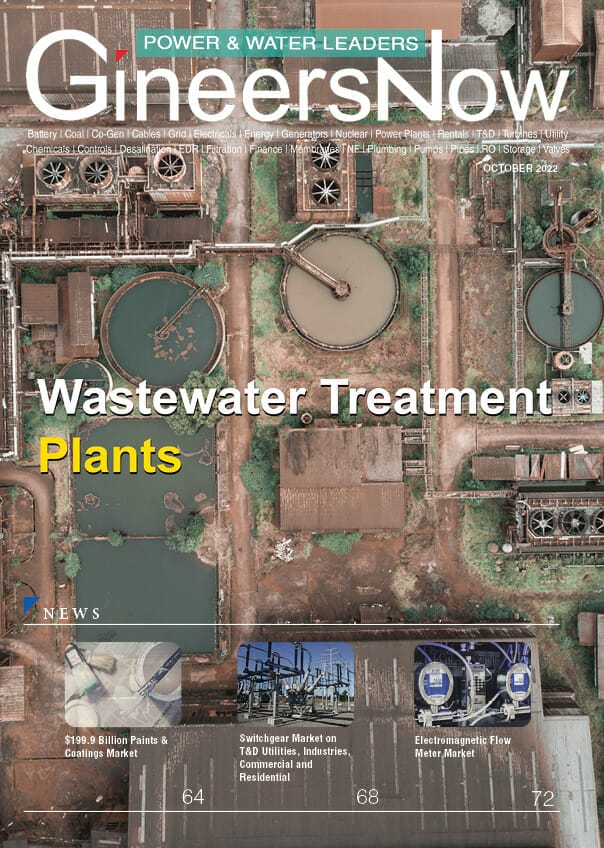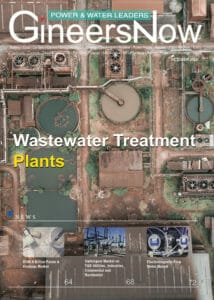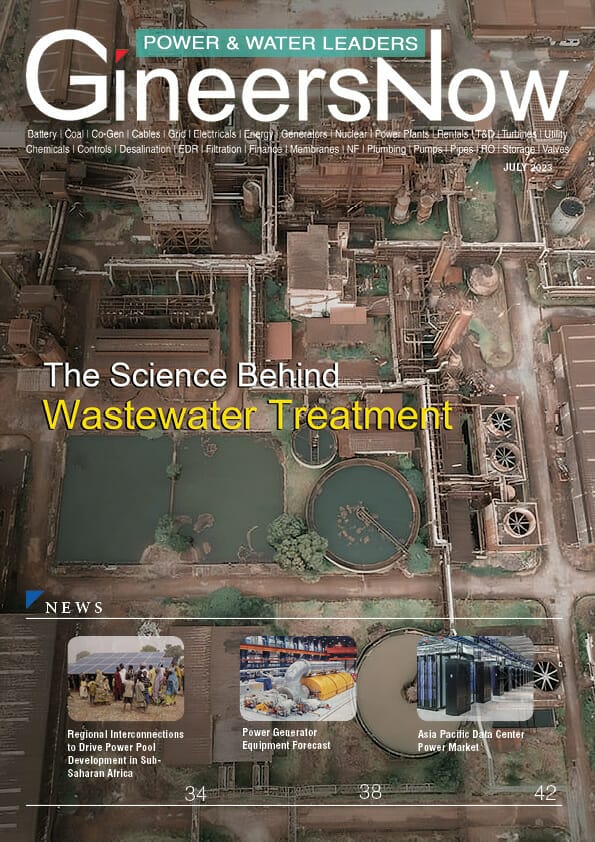Wastewater treatment plants help keep our water clean by removing contaminants and pollutants from the wastewater. They are a vital part of the wastewater treatment process. In this article, we will discuss some of the most important parts of wastewater treatment.
To learn more about wastewater treatment system please visit Cleanawater
What is Wastewater Treatment?
Wastewater treatment is the process of removing contaminants from wastewater using mechanical, chemical, or biological processes. Wastewater can be contaminated with various pollutants, including chemicals, oils, and debris.
Wastewater treatment plants are crucial for protecting public health and the environment. They play an important role in ensuring that wastewater is properly treated and disposed of without contaminating waterways.
How Does a Wastewater Treatment Plant Work?
A wastewater treatment plant is a facility that is used to treat wastewater. Wastewater treatment plants use a variety of technologies to remove pollutants from wastewater. Some of the most common technologies used in wastewater treatment plants are primary, secondary, and tertiary processes.
Primary processes involve using natural processes such as oxidation and biological degradation to break down pollutants. Primary processes are the least expensive option but can be less effective at removing pollutants.
Secondary processes involve using physical or chemical methods to break down pollutants. Secondary processes are more expensive than primary processes but can be more effective at removing pollutants.
Tertiary processes involve combining primary and secondary processes to remove all types of pollutants effectively. Tertiary processes are the most expensive option but can be the most effective at removing all types of pollutants from wastewater.
The Step-By-Step Process of Wastewater Treatment
1. Identification of the wastewater stream.
2. Collection of wastewater from the point of discharge.
3. Preliminary treatment to remove suspended and dissolved material.
4. Secondary treatment to remove pollutants and odors.
5. Discharge of treated wastewater into a body of water or another wastewater treatment facility.
The wastewater treatment process begins with collecting wastewater from commercial or residential sources. Wastewater is then processed to remove contaminants and disposed of appropriately. Wastewater treatment plants use various methods to treat wastewater, including primary, secondary, and tertiary treatment.
The primary treatment uses a simple process that separates water from contaminants by contact or filtration. Secondary treatment uses physical and chemical processes to remove more complex pollutants. The tertiary treatment uses advanced technologies such as microorganisms to clean water molecules of pollutants.
How Do Wastewater Treatment Plants Remove Contaminants?
Wastewater treatment plants remove contaminants by three primary methods: adsorption, flocculation, and sedimentation.
Adsorption is the process of attaching molecules to a surface to be removed. Contaminants that are adsorbed onto the plant’s surfaces will then be removed by the plant’s filter systems.
Flocculation is the process of large water droplets forming into small ones, and sedimentation is the deposition of solids from a liquid. Wastewater treatment plants use different types of filters to achieve these goals.
Sedimentation filters are designed to trap large pieces of debris, while flocculation filters are designed to trap bacteria and other small particles.
What Are Some Common Problems With A Wastewater Treatment Plant?
Wastewater treatment plants are essential for managing wastewater and ensuring compliance with environmental regulations.
However, wastewater treatment plants can also experience several common problems. These problems can include leaks, overflows, and poor plant performance due to high levels of contaminants in the water.
To overcome these issues, wastewater treatment plants typically require regular maintenance and inspection.
What Can Be Done To Improve The Performance Of A Wastewater Treatment Plant?
Wastewater treatment plants can help to improve water quality by removing pollutants and contaminants from the wastewater stream. However, wastewater treatment plants can also struggle to meet certain performance criteria. This can result in degraded water quality and increased environmental pollution.
There are several ways that wastewater treatment plants can be improved to improve their performance.
First, wastewater treatment plants should be designed with optimal equipment and facilities for treating different types of water pollutants.
Second, proper maintenance and management of the plant should be ensured to keep it running at its best.
Finally, effective effluent discharge management practices should be in place to prevent pollutants from entering waterways untreated.
Why Should We Have a Wastewater Treatment Plant?
The benefits of having a wastewater treatment plant are many. A wastewater treatment plant can help protect the environment by removing pollutants from wastewater before it is discharged into rivers, lakes, or oceans.
Wastewater treatment also helps reduce the amount of waste that needs to be disposed of in landfills. Finally, wastewater treatment plants provide economic benefits by reducing the cost of waste disposal.
What Are the Benefits of Having a Wastewater Treatment Plant?
A wastewater treatment plant (WWTP) helps manage the city’s waste by transforming pollutants and contaminants from human, industrial and agricultural activities into safe water and soils. Wastewater treatment plants provide many benefits to city residents and businesses, including:
Reduced environmental pollution – A WWTP helps reduce environmental pollutants like PCBs, nitrogen oxide, chlorine levels, and fecal coliform bacteria.
Improved public health – A WWTP is essential for protecting the public’s health by removing harmful contaminants from wastewater.
Enhanced economic development – A WWTP can help spur economic development by attracting new businesses that rely on clean water supplies.
What Are the Risks of Having a Wastewater Treatment Plant?
There are many risks associated with wastewater treatment plants. One of the most common is that untreated wastewater can contain harmful bacteria and chemicals that can contaminate water supplies.
Additionally, untreated wastewater can also cause environmental damage by releasing toxins into the environment. Wastewater treatment plants are important to protect our environment, but they also come with many risks.
How Can I Support Our Local Wastewater Treatment Plants?
Wastewater treatment plants play a critical role in our local communities by treating and disposing of wastewater. These plants help protect our environment and waterways while providing important economic benefits to the area. It is important to support these vital facilities by keeping them clean and functioning properly.
This can be done by following the instructions that are posted at the plant, as well as biannually inspecting the plant for any signs of problems.
Additionally, donating money to the plant or sponsoring a fundraiser can go a long way in helping it stay operational and improving the quality of wastewater treatment in your community.
Antimicrobial Resistant Genes and Wastewater Treatment Plants
Emerging evidence suggests that antimicrobial-resistant genes and organisms are being transferred from wastewater treatment plants (WWTPs) to the environment. This is of a global public health concern as these genes and organisms can contaminate water supplies and potentially cause serious infections in people.
There are a number of ways in which antimicrobial-resistant genes and organisms can be transferred from WWTPs to the environment.
One way is through the release of treated effluent into surface waters. This effluent can contain a high concentration of antimicrobial-resistant bacteria, which can then spread to other water bodies via water currents.
Another way is through the discharge of sludge from WWTPs. This sludge can contain high levels of antibiotic resistance genes, which can spread to soil and water systems when it is applied to land as fertilizer.
Wastewater Treatment Plants: Surface and Groundwater, Weathering and Soils
Surface water and groundwater are two important sources of water for human use. Groundwater is the water that seeps into the ground and is stored in aquifers, while surface water is the water that flows on the land surface, such as in rivers and lakes.
Weathering is the process by which rocks and minerals are broken down by the action of wind, rain, and other weathering agents. Soils are formed by the process of weathering and also contain organic matter that has been added by plants and animals.
Wastewater treatment plants are designed to remove pollutants from wastewater before it is discharged into surface waters or reused. There are many different types of wastewater treatment plants, but all have the common goal of protecting human health and the environment.
Latest Trends in ARGs measured by HT-qPCR platforms: Wastewater Treatment Plants
The use of wastewater treatment plants has been on the rise in recent years as more and more countries look to clean up their water sources. This has led to a need for more sophisticated wastewater treatment plants that can handle the increased load.
One way to measure the efficiency of these plants is through the use of HT-qPCR platforms. HT-qPCR platforms can provide accurate and reliable data on the levels of contaminants in wastewater. This information is then used to improve the efficiency of the plant.
In addition, HT-qPCR platforms can also be used to monitor trends in contaminant levels over time.
The use of HT-qPCR platforms is becoming increasingly common in wastewater treatment plants around the world. This is because they provide accurate and reliable data that can be used to improve plant efficiency.
Microplastics in Wastewater Treatment Plants
Microplastics are a type of plastic that is smaller than 5mm. They can be found in many different products, such as cosmetics, food packaging, and even some clothes. Microplastics can end up in our environment and eventually in our wastewater treatment plants (WWTPs).
When microplastics enter WWTPs, they can cause problems with the plant’s equipment. They can also end up in the sludge that is produced by the WWTP. The sludge is often used as fertilizer, which means that microplastics can end up in our food supply.
There are some methods that can be used to remove microplastics from WWTPs, but they are not always effective. More research needs to be done to find a way to remove microplastics from our environment before they cause more damage.
How To Get Rid of Quinolone Antibiotics from Wastewaters and Sewage Sludge
The removal of quinolone antibiotics from wastewater and sewage sludge can be achieved through several wastewater treatment processes. Advanced wastewater treatment plants that use activated sludge or Membrane Bioreactors (MBR) are able to remove these antibiotics to levels below the detection limit.
Aerobic digestion is another option for removing quinolone antibiotics from sewage sludge. This process can achieve a reduction in these compounds of up to 99%.
Removing quinolone antibiotics from wastewater and sewage sludge is important to protect the environment and human health. These antibiotics can have a negative impact on the growth of aquatic plants and animals and can also lead to the development of antibiotic resistance in bacteria.
How to Get Rid of Antimicrobial Resistance Determinants from Wastewater
The World Health Organization has classified antimicrobial resistance as a global health emergency. The rise in antibiotic-resistant infections has been attributed to the use of antibiotics in both humans and animals, as well as the release of untreated wastewater from sewage treatment plants.
There are many conventional and emerging technologies that can be used to remove antibiotic resistance determinants from wastewater. Conventional treatment methods, such as chlorination and UV disinfection, are effective at removing most bacteria and viruses. However, these methods may not be effective against all types of antibiotic-resistant bacteria.
Emerging technologies, such as advanced oxidation processes (AOPs) and nanofiltration, show promise for the removal of antibiotic resistance determinants from wastewater.
Wastewater Treatment Plants and Artificial Intelligence
Wastewater treatment plants are responsible for treating water used in homes, businesses, and industries. This water may contain pollutants that can harm the environment or human health if it is not properly treated. Sustainable management of wastewater treatment plants is a critical issue for many industries. Artificial intelligence techniques can help to optimize the operation of these facilities and improve their sustainability.
Wastewater treatment plants use various methods to remove these pollutants from the water before it is discharged into the environment. Artificial intelligence techniques can be used to optimize the operation of wastewater treatment plants. These techniques can help to identify operational problems and potential improvements that can be made to the facility. AI-based systems can also be used to monitor the performance of wastewater treatment plants and provide data that can be used to improve their sustainability.
Wastewater Treatment Plants and Global Climate Change
Water treatment plants remove contaminants from municipal wastewater using a variety of technologies. Wastewater treatment plants can have a significant impact on local and global climate change, depending on their construction and operation.
The overall function of wastewater treatment plants is to reduce the volume and toxicity of wastewater, but this task impacts the local climate. In temperate climates, the water used in wastewater treatment comes from rainfall or snowmelt; in hot climates, treated water often comes from desalination. The physical removal of pollutants by the plant requires energy and releases greenhouse gases into the atmosphere. In some cases (such as nitrification), these emissions can produce potent greenhouse gases like nitrogen oxide (NOx).
Many wastewater treatment facilities are now installing air pollution scrubbers to mitigate these impacts to capture NOx before it reaches the atmosphere. These scrubbers can be expensive to install and maintain, so it is important to weigh the benefits of reducing pollutants against the cost.
How Wastewater Treatment Plant Can Help Remove Pharmaceutical Contamination
Pharmaceuticals are increasingly being detected in water bodies around the world. This is due to the growing use of these drugs by humans and their release of them into the environment through wastewater treatment plants (WWTPs). The presence of pharmaceuticals in water can pose a risk to human health and the environment. Some drugs can interfere with the normal functioning of hormones, while others may promote the growth of antibiotic-resistant bacteria.
There is a need for further research on the fate and transport of pharmaceuticals in WWTPs and their potential impacts on human health and the environment. In the meantime, it is important to ensure that WWTPs are operated properly, and that effluent is properly treated before it is released into receiving waters.
Wastewater Treatment and Water Reclamation
The wastewater treatment process is designed to clean water of pollutants and solids, making it safe for reuse. Wastewater is collected from households, businesses, and other institutions and then treated before being released into the environment. The various wastewater treatment plants use various technologies to treat wastewater and release water that meets environmental standards.
Water reclamation is the process of recovering usable water from wastewater. This can be done by treating the wastewater with energy to break down chemicals or by using wetlands or anaerobic digestion to extract groundwater. Water reclamation can help reduce the amount of freshwater needed for municipal use, conserve resources such as energy and land, and create new jobs in related industries.
Who are the People Responsible For Making Sure That Wastewater Is Treated Properly?
Wastewater treatment plants are responsible for ensuring that wastewater is treated properly to protect the environment and public health. Those who ensure wastewater is treated properly include plant operators, engineers, and scientists.
The environmental protection system ensures that harmful pollutants are eliminated before they reach our waterways. This includes removing solids and liquids and reducing air pollution levels to safe levels.
How Treat Wastewater and Make It Safe For Discharge?
There are many ways to treat wastewater before it is discharged into the environment. The most common type of treatment is at a wastewater treatment plant. The water is treated with chemicals and then filtered to remove any impurities. The water is also treated with bacteria to break down any organic matter. This process makes sure that the water is safe to discharge into rivers, lakes, and streams.
To make wastewater safe for discharge, cities treat it using various methods depending on the type of treatment plant. The first step is usually to screen the water to remove any large objects. Then, the water is passed through a grit chamber, where heavier particles settle at the bottom. After that, it enters an aeration tank, where the air is injected to encourage bacterial growth. The bacteria help break down organic matter in the water. Finally, the water is passed through filters where any remaining particles are removed before being discharged into the environment.
Local Communities and Wastewater Treatment
Wastewater Treatment Plants are key in ensuring that small communities have safe water to discharge. There are many different types of treatment plants, but all follow a similar process.
First, the wastewater is collected and then goes through a series of filtration processes.
Next, the water is treated with chemicals to remove any harmful bacteria or viruses.
Finally, the water is discharged into the environment.
There are many benefits to having a Wastewater Treatment Plant in a small community. Not only does it make the water safe for discharge, but it also helps to protect the environment. By treating the water before it is discharged, we can help to reduce pollution and keep our waterways clean.
The Septic System
Most homeowners don’t give their septic system a second thought until something goes wrong. So, how do these systems work, and why do they fail?
Septic systems are common in rural areas where there is no central sewer system. They are also used in some urban areas as an alternative to a central wastewater treatment plant. Septic systems are underground tanks that collect sewage from homes and businesses. The sewage is treated and then released into the ground.
There are three main types of septic systems: aerobic, anaerobic, and facultative. Aerobic septic systems have a pump that oxygenates the sewage, which speeds up the decomposition process. Anaerobic septic systems do not have a pump and rely on bacteria to break down the sewage. Facultative systems use a combination of aerobic and anaerobic processes.
The Septic System: How It Works
Most homeowners don’t give their septic system a second thought until something goes wrong. So, how do these systems work, and why do they fail?
Septic systems are common in rural areas where there is no central sewer system. They are also used in some urban areas as an alternative to a central wastewater treatment plant. Septic systems are underground tanks that collect sewage from homes and businesses. The sewage is treated and then released into the ground.
Is There an Eco-Friendly Method To Treat Wastewater?
Yes, there are many natural ways to treat wastewater. Wastewater Treatment Plants (WTPs) are designed to remove pollutants from sewage, stormwater runoff, and other types of water. WTPs use a variety of physical, chemical, and biological processes to clean water.
One natural way to treat wastewater is through the use of wetlands. Wetlands are areas of land that are saturated with water. Wetlands can be found in many different climates and ecosystems. They can be used to treat wastewater by filtering out pollutants and providing a habitat for plants and animals.
Another natural way to treat wastewater is through the use of constructed wetlands. Constructed wetlands are man-made systems that mimic the functions of natural wetlands. They can be used to remove pollutants from sewage, stormwater runoff, and other types of water.
Can Wastewater Pollute The Sources of Our Drinking Water?
Wastewater treatment plants are designed to remove pollutants from sewage before it is discharged into the environment. However, these plants can also pollute drinking water sources if they are not properly operated and maintained.
There are several ways that wastewater treatment plants can pollute drinking water sources. One way is through direct discharge of untreated or only partially treated sewage into surface waters. This can happen when plant operators bypass treatment processes or fail to maintain the facilities properly. Another way is through indirect discharge of treated sewage into groundwater through leaks in sewage pipes or seepage from storage ponds or lagoons. This can contaminate private wells and public water supply wells.
Wastewater treatment plants are designed to remove harmful substances from wastewater before it is discharged into the environment. However, these treatment processes can only remove certain substances and do not eliminate all pollutants.
Some of the most common pollutants that remain in treated wastewater include nutrients, bacteria, viruses, and chemicals. These pollutants can pollute drinking water sources if they are not properly managed. Nutrients like nitrogen and phosphorus can promote the growth of algae and other aquatic plants. When these plants die, they decompose and release toxins that can contaminate drinking water supplies. Bacteria and viruses can also cause sickness when they come into contact with humans.
Can Wastewater Treatment Plants Remove Toxic Chemicals of Industrial Wastes?
As the world progresses, the industry does as well. Unfortunately, with this progress comes an increase in waste production, specifically industrial waste. This type of waste can be extremely harmful to the environment and public health if not disposed of properly. So, the question is: can public wastewater treatment plants remove all of those toxic chemicals?
The short answer is yes, but it depends on the type of wastewater treatment plant. There are three main types of wastewater treatment plants: activated sludge, trickling filters, and rotating biological contactors. All three types are effective in removing different types and concentrations of pollutants.
It is important to note that not all industrial wastewaters are created equal. Some may contain only a few pollutants, while others may contain many different types and concentrations of pollutants. This makes it difficult to say that one type of wastewater treatment plant is better than another.
Why Do We Need To Treat Wastewater?
Wastewater treatment is essential for protecting public health and the environment. Wastewater treatment plants remove pollutants from sewage and household wastewater so that they can be safely returned to the environment.
Pollutants removed from wastewater include harmful bacteria, viruses, nutrients, chemicals, and solids. Without wastewater treatment, these pollutants would pollute our air, water, and land. This would lead to increased cases of illness, lower water quality, and damage to plant and animal life. In some cases, untreated wastewater can even cause death.
The Impact of Wastewater Pollutants
The U.S. Environmental Protection Agency (EPA) has identified four major types of wastewater: sanitary, storm, industrial, and hazardous. Each type requires different methods of treatment before discharge into the environment.
Sanitary wastewater comes from toilets, showers, sinks, and other sources of domestic water use. It is usually treated with physical processes such as sedimentation and filtration, followed by disinfection with chlorine or ultraviolet light.
Stormwater is runoff from rain or snowmelt that can pick up pollutants such as oil, grease, heavy metals, and pesticides as it flows over the land surface.
Industrial wastewater includes process water from manufacturing facilities as well as cooling water and boiler blowdown from power plants.
Hazardous waste is also considered industrial wastewater. This type of wastewater requires the most advanced treatment technologies because it may contain a wide variety of toxic chemicals.
Equipment Used in Wastewater Treatment Plants
There are many different types of equipment used in these plants, each with its own specific purpose.
The first type of equipment is the primary treatment stage. This stage removes large pieces of debris from the wastewater. This is done using a screen or a grit chamber.
The next stage is secondary treatment. This stage uses bacteria to break down organic matter in the wastewater.
Finally, there is tertiary treatment. This stage disinfects the water and removes any remaining impurities. Without proper treatment, wastewater can contain harmful bacteria and other contaminants that can pose a serious health risk. Each of these stages is important in ensuring that the final product is clean and safe to use.
The Future of Wastewater Treatment Plants?
The wastewater treatment plant industry is constantly evolving to meet the needs of today’s society. Technologies are changing, and new methods are being developed all the time, which means that wastewater treatment plants must keep up with the latest trends.
One trend that is gaining popularity is using recycled water in wastewater treatment plants. Recycled water contains more nutrients and fewer pollutants than freshwater, making it a valuable resource for wastewater treatment plants. By recycling wastewater, wastewater treatment plants can help reduce the amount of contaminated water that needs to be disposed of.
Another trend in the wastewater treatment plant industry is using artificial intelligence (AI) to make decisions about how to treat water. AI can be used to optimize processes and optimize waste management strategies, which can save energy and reduce environmental impact.
As the world becomes more environmentally conscious, more municipalities will likely begin requiring their wastewater treatment plants to use recycled water and AI technology in order to meet stricter regulations. In fact, some countries have even set deadlines for how much-recycled water must be used in order for a municipality to receive certification from an organization like United Nations Educational Scientific and Cultural Organization (UNESCO).
Read GineersNow Power & Water Magazine for FREE
Editor’s Note
Introduction to Wastewater Treatment Plant
A wastewater treatment plant is a facility where sewage and other water-borne wastes are treated to remove contaminants before being released into the environment. Wastewater treatment plants come in a variety of sizes and configurations, but all use similar processes to clean water.
The first step in wastewater treatment is screening, which removes large objects like sticks and stones from the sewage.
The next step is the primary treatment, which involves removing organic matter and suspended solids from the sewage.
The third step is secondary treatment, which uses bacteria to break down the remaining organic matter.
Finally, the effluent from the secondary treatment stage is disinfected before it is discharged into receiving waters.
Wastewater treatment plants play an important role in protecting public health and the environment. Without these facilities, sewage and other wastes would pollute our air, water, and land.
Wastewater Treatment Plant Process
Wastewater Treatment Plants (WWTPs) are designed to remove pollutants from sewage and industrial wastewater. The process begins when the sewage or wastewater is piped into the WWTP.
The first step in the treatment process is to screen the sewage or wastewater to remove large objects such as sticks, leaves, and rags.
Next, the sewage or wastewater is pumped into a grit chamber where heavy particles such as sand and gravel are removed.
After the grit chamber, the sewage or wastewater enters an aeration tank, where it is mixed with bacteria and air.
The mixture is then pumped into a sedimentation basin where the solid waste settles to the bottom, and the treated water flows to the next stage of treatment.
The final stage of treatment consists of disinfecting the water with chlorine before it is discharged into a nearby body of water.
Types of Wastewater Treatment Plants
There are many different types of wastewater treatment plants. The most common type is the activated sludge plant. This type of plant uses bacteria to break down the organic matter in the wastewater. The treated water is then discharged into a receiving water body, such as a river or lake.
Another common type of wastewater treatment plant is the trickling filter plant. This type of plant uses a bed of rocks or gravel to filter the water. The treated water is then discharged into a receiving water body.
The third type of wastewater treatment plant is the sewage treatment plant. This type of plant treats sewage before it is discharged into a receiving water body.
Advantages and Disadvantages of Wastewater Treatment Plants
Wastewater treatment plants are essential for keeping our waterways clean. Without them, sewage and other pollutants would be discharged directly into rivers, lakes, and streams.
However, these facilities can also have negative impacts on the environment.
One of the main advantages of wastewater treatment plants is that they help to protect public health by reducing the amount of contaminants in water bodies. These facilities also help to preserve water quality for drinking, irrigation, and recreation.
In addition, they can provide an important source of renewable energy.
However, there are also some disadvantages associated with wastewater treatment plants.
First, these facilities can generate large amounts of greenhouse gases.
Second, they can pollute nearby air and water resources with noise and odors.
Finally, they can be costly to operate and maintain.
The Challenges of Wastewater Treatment
There are numerous challenges associated with wastewater treatment plants. One challenge is the sheer volume of wastewater that must be treated.
Another challenge is the variety of pollutants that must be removed from the water.
Treatment plants must also deal with the ever-changing composition of wastewater and the possibility of toxic substances entering the water supply.
In addition, treatment plants must contend with the fact that not all wastewater can be treated to the same standards. Some effluent must be discharged into receiving waters without meeting all effluent quality standards.
The challenges associated with wastewater treatment can be overcome by proper planning, design, and operation of treatment facilities.
However, it is important to remember that there are always potential risks involved in treating wastewater.
Conclusion
A wastewater treatment plant is a critical component of the wastewater treatment process. If you want to support your local wastewater treatment plant, there are many ways to do so.
There are also many resources available to help you learn more about wastewater treatment plants. Read GineersNow Power and Water Leaders Magazine for more wastewater-related topics.
Click below to read the magazine
Click here to download the magazine
Click here to read on Yumpu

































